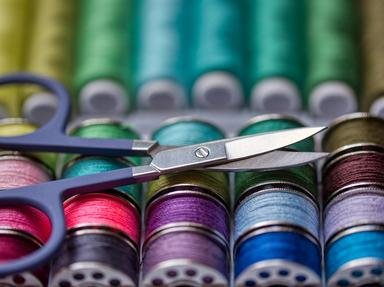Quiz Answer Key and Fun Facts
1. What is the proper term for the stitch in which you do this: YO 3 times (4 loops on hook), insert hook into stitch and pull through (5 loops on hook). YO, pull through 2 (4 times to complete stitch).
2. What does the abbreviation "dcfP" stand for?
3. When you follow these instructions, what stitch are you doing?
"YO, insert hook into next stitch, draw up a loop, YO, pull through 2 loops, YO, insert hook into next stitch, draw up a loop, YO, draw through 2 loops, YO, draw through remaining 3 loops on hook to complete stitch"
4. You are finishing an afghan. You have decided that you want 3 rows of single crochet around the edge, but you don't want the corners to become rounded. What would you do to make the corners stay more square-liked, or pointed?
5. Where was crochet first known to be super popular, and when?
6. What pattern would the following instructions represent?
"DC in next 4 st, 3dc in next st, dc in next 4 st, dc2tog over the next 2 stitches... rep pattern to end stitch"
7. If a pattern tells you to chain a multiple of 5+7, which one of the following would be a correct chain count?
8. Which one of the choices below would be the directions to the start of a hat?
9. Which of the following is the correct metric size for the Boye US "I" hook?
10. Which color of yarn would you NOT want to use when testing a new pattern? {Normal shades of the colors, not light or dark of any color are instilled here}
Source: Author
KahliaSelicia
This quiz was reviewed by FunTrivia editor
WesleyCrusher before going online.
Any errors found in FunTrivia content are routinely corrected through our feedback system.
